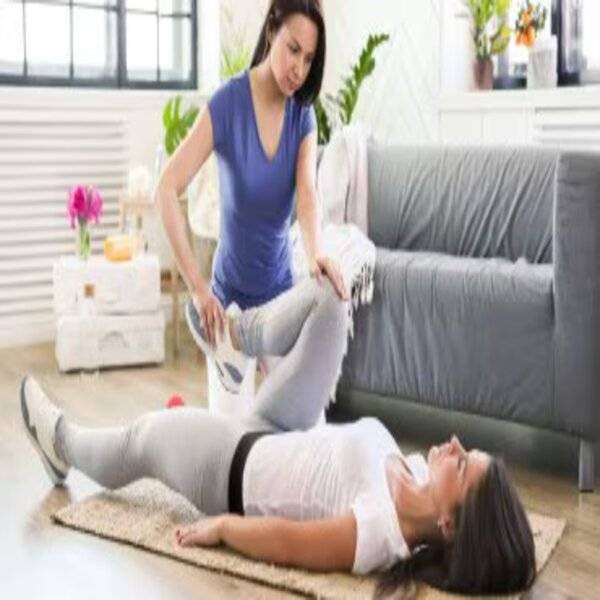Stroke rehabilitation is a long process that requires more than just taking medications. On World Stroke Day, find out what else you can do to get well.
A stroke is a medical emergency that can result in death or disability. It occurs when blood does not flow easily to the brain. Without adequate blood flow, cells in your brain will begin to die, but therapy is feasible. After then, you must proceed with extreme caution. It is possible to recover after a stroke, even though the timing varies. Medications will help you feel better, but in order to see results, you must also consult with specialists such as physiotherapists and nutritionists. Getting some exercise and eating a nutritious diet can help assist you in the healing process. On World Stroke Day, October 29, know what to do after being discharged from the hospital.
What is a stroke? A stroke happens when blood flow to a portion of the brain is disrupted, depriving brain cells of oxygen and nutrients, resulting in cell death. It can damage any area of the brain. "This disruption can happen either due to a blockage or a burst blood vessel," says neurologist Dr. Nikhil B. According to World Health Organization research, the incidence of stroke increased by 70% between 1990 and 2019, while the number of stroke-related fatalities increased by 43%. It requires quick medical care to prevent brain damage and potential disability. Can be minimized.
An ischemic stroke occurs when a blood clot blocks blood flow to the brain.
A hemorrhagic stroke occurs when a blood vessel in the brain breaks, resulting in bleeding.
A transient ischemic attack (TIA), often known as a mini-stroke, is a brief interruption of blood flow. Even if it only lasts a short period, it acts as a warning sign of potential future strokes.
What are the causes of a stroke?
"It is mostly caused by heart-related conditions, including high blood pressure and atherosclerosis, which is the buildup of cholesterol and fats around the artery walls," advises the physician. Atrial fibrillation, an irregular and frequently fast heart rhythm that can lead to blood clot development in the heart
Another reason.SmokingObesityExcessive alcohol consumptionweakened blood vesselsHigh blood pressureFamily history.High cholesterol.What are the signs of a stroke?It can have a variety of effects on your physical and cognitive capacities. Here are some indicators of a stroke.
Symptoms of an ischemic stroke include abrupt numbness, disorientation, trouble speaking, and weakness on one side.Severe headaches, nausea, visual abnormalities, and convulsions are all symptoms of a hemorrhagic stroke.Symptoms of an UTI are similar to those of an ischemic stroke, including transient weakness, dizziness, and slurred speech that normally last only minutes.Regardless of the form, recognizing these indicators early and quickly seeking medical attention helps minimize long-term impacts or problems such as paralysis or muscular weakness, speech and communication issues, memory, and cognition.
challenges. Stages of Stroke RecoveryAccording to the England and Wales National Health Service (NHS), some patients can bounce back in as little as a few days or weeks. Others may take months or even years and may require adaptations, such as modifying their houses to make it simpler to move around. "Usually, people start seeing noticeable improvements in the first three to six months, as during this time, the brain adjusts and relearns skills," according to Dr. Nikhil.
The Brunnstrom Stages of Stroke Recovery, which describe the progression of a person's capacity to move and the brain's reconfiguration following a stroke, were developed in the 1960s. It was created by Swedish-American physical therapist Signe Brunnstrom, according to the Physical Therapy journal.
Stroke recovery: Seven things you should know
1. Use a systematic recovery strategy.
Physical, occupational, and speech therapy are all part of the rehabilitation plan, and they all address distinct components of the healing process. Physical therapy can help you restore strength and balance. Physiotherapy might be especially beneficial if you have issues like numbness on one side of your body, according to the NHS. Occupational therapy helps people re-learn daily skills like dressing themselves and cooking. If you have difficulty speaking or swallowing, speech therapy is essential.
2. Follow a stroke-friendly diet.
Eat more fruits, veggies, and whole grains to improve recovery and avoid future strokes. "Reducing sodium and unhealthy fats is particularly important to control blood pressure and cholesterol levels," the doctor suggests. Avoiding red meat According to a study published in the BMJ Journals in 2018, egg yolk can help avoid strokes. A low-protein diet can also be beneficial if you have previously suffered a stroke. A 2019 study published in the Nutrients journal found that individuals on a low-protein diet had greater muscle tone in their hands and upper limbs after a stroke.
3. Perform regular, supervised exercise.
Physical activity helps to regain strength and improve cardiovascular health. Walking, stretching, and modest resistance training can all be useful, depending on your abilities. Resistance training was shown to dramatically enhance muscular strength, power, and endurance in stroke survivors, according to 2017 research published in the journal Stroke Studies and Treatment.
4. Adhere to recommended medicines.
Medications serve an important role in avoiding subsequent strokes. "Commonly prescribed drugs may include anticoagulants (blood thinners), antihypertensives (for blood pressure), and statins (for cholesterol)," according to a doctor. Adherence to your doctor's advice and regular follow-ups are essential for monitoring and adjusting dosages as required.
5. Monitor blood pressure.
High blood pressure can cause a heart attack or stroke, according to the American Heart Association. Keeping blood pressure within normal limits can lower the risk of another stroke. Make sure it's less than 120/80 millimeters of mercury. Home monitoring devices can offer daily readings, but regular check-ups with doctors are required to change prescriptions or lifestyle modifications as necessary.
6. Get psychological and emotional help.
"Stroke survivors may experience depression, anxiety, or frustration due to the physical and cognitive limitations they face," according to a doctor. Talking to a psychologist or attending counseling sessions might help you manage your emotional issues.
7. Use mobility aids for safety.
Canes, walkers, and other gadgets can help with balance and movement concerns. Wheelchairs can improve mobility safety. Occupational therapists frequently give advice on how to use these devices successfully, which can help reduce falls and promote independence.


